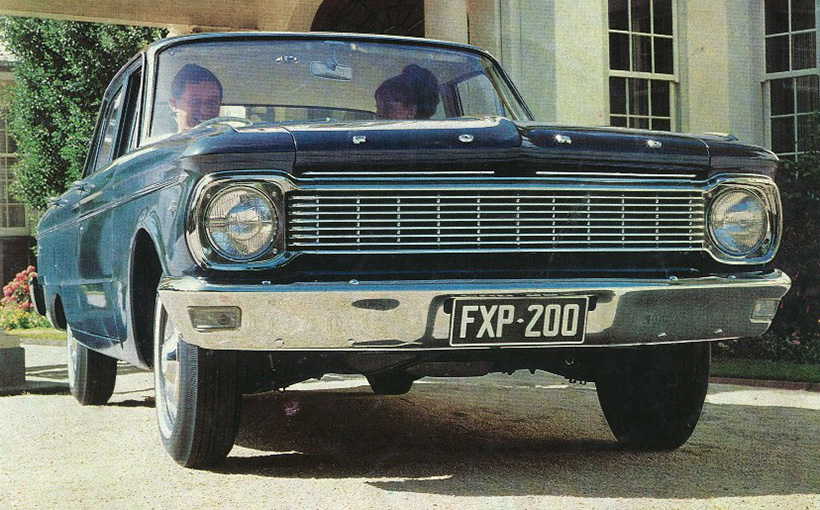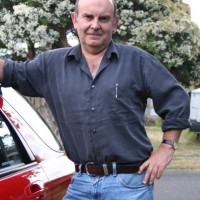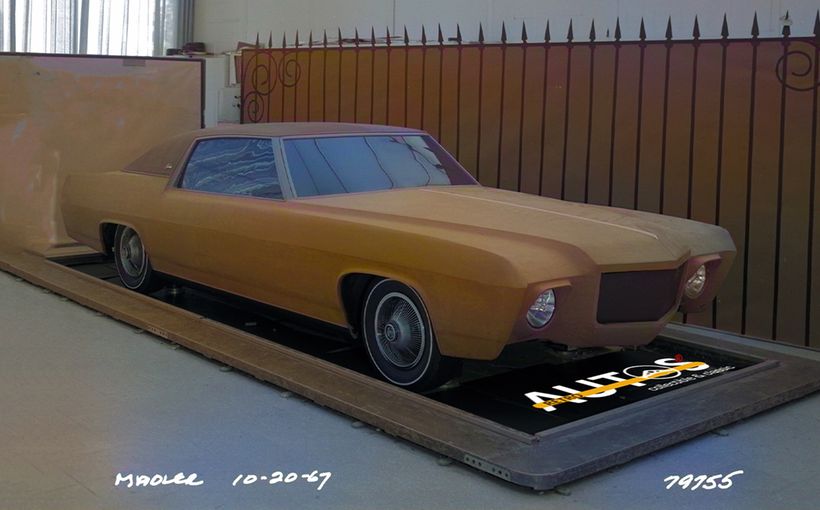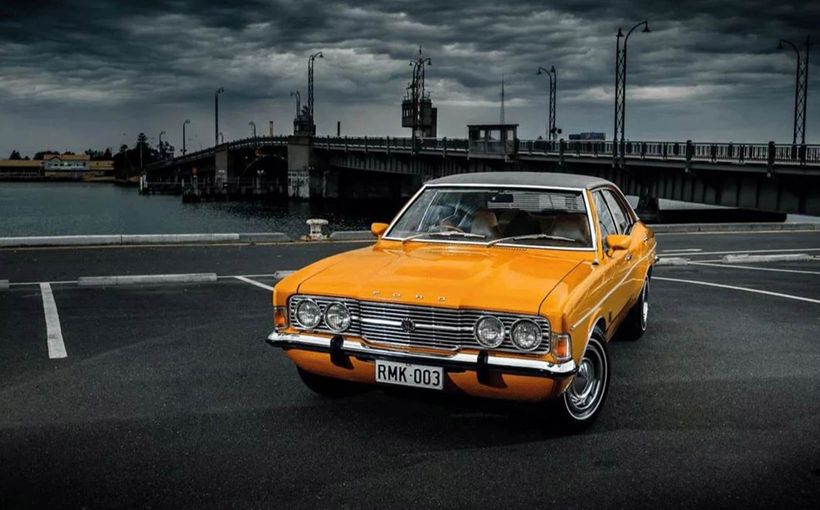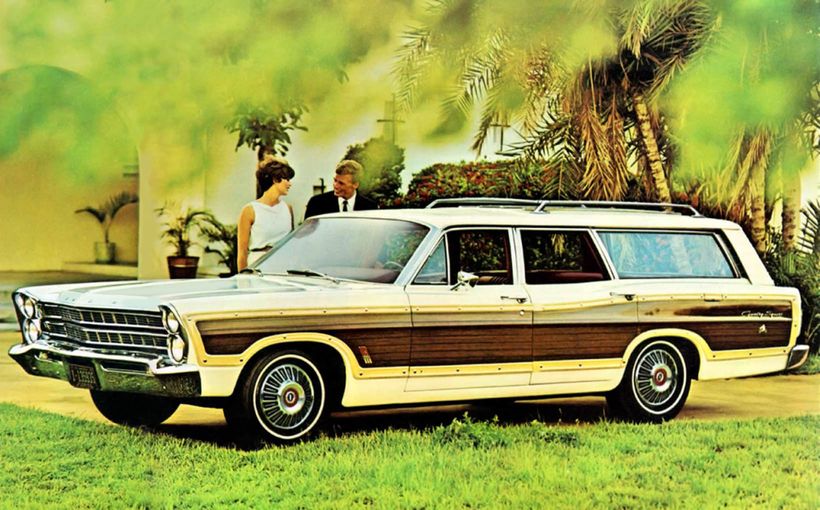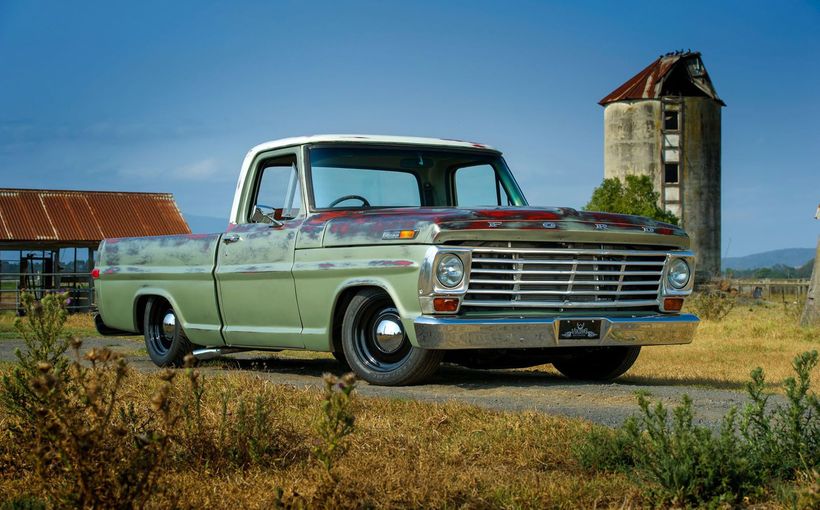1965-66 Ford XP Falcon: From Foul Can to Falcon

The March 1965 launch of the XP Falcon was more than just another facelift, it was Ford’s last chance as a serious local manufacturer. During an era when serious drivers referred to both cars as the Foul Can and the Hold On, the XP delivered less Foul Can as the HD offered more Hold On.
The XP Falcon’s acceptance owed as much to its HD Holden rival choking yet it was still no contest as almost 71,000 XP Falcon sales paled against the 179,000 HD examples sold over a much shorter model life. Holden could still squeeze the Falcon out on price at any time it chose with more than twice the economies of scale. At best, the XP could only give Ford the toehold it needed for what was coming.
The raw production figures don’t tell the full story. After a strong initial sales spurt, the XP Falcon had to hold the fort from April 1966, when the HR Holden was released, until September 1966,when the all new XR Falcon series was launched. Although sales suffered against the popular HR, the fact that Ford could sell the Falcon at all during this period was an achievement as reports of early Falcon failures gathered momentum.

Although the XP is remembered as a popular model, its sales were nothing special. The previous XM’s sales of 47,039 were achieved in 12 months, the XP’s 71,000 (70,998 according to most sources) taking 19 months or around 44,000 per year. This flat line annual sales rate highlights why Bill Bourke had no choice but to introduce a circuit breaker to launch the XP Falcon with the 70,000 mile durability run. Despite the XP’s improvements, the Falcon was old.
By 1965, Holden had introduced three all new body styles plus two facelifts since the arrival of the first Falcon. Just as the XP was gaining traction, the HR facelift arrived. By the time the XP Falcon had ended, the same 1960 Falcon starting point with its three modest facelifts had to face no less than six different Holdens and seven different engines. It also had to face a formidable Chrysler Valiant, a model that arrived with a brand new style and one facelift (R and S Series) that was soon replaced by a second all new style (AP5) then facelifted (AP6) in time for the XP.
The Falcon had gone from the freshest new model in this category to the oldest in just five years.

A Matter of Tooling
The real culprit in this process was Australia’s tough new local content rules which forced car companies after 1964 to commit to full local manufacture or pay the price in punitive duties. It was a flawed process that ultimately did as much to drive local manufacturers out of the country while boosting car prices and preventing important new mechanical and safety developments from reaching local cars. It also later led to a unique set of design rules to accommodate local manufacturers which made import compliance a nightmare.
This new regime failed to take into account that Holden could count on up to a 50 per cent share of the market. That allowed Holden to effectively control what local component suppliers could afford to manufacture for the companies fighting over the scraps.
There were no disc brakes, no steel-belted radials, no alternators, no twin-choke carburetors, no four speed manuals, no synchros on first gear and no decent three-speed automatics unless Holden needed them or they could get past local content provisions. For Ford to get a jump over Holden, it needed big enough sales to persuade a local component supplier to tool up for Ford first, not Holden.
Textile-belted radial tyres were amongst the very few exceptions as AMI-Triumph and the Austin 1800 plus the aftermarket underpinned volumes without Holden.
The big new cost in this drive to full local manufacture was body tooling. Unless a company could amortise those costs over a series of models here or overseas, a new entry had no chance during this era of annual facelifts.

The calculations are alarmingly simple. Following Ford’s local set-up costs for the all-new XK Falcon in 1960, there were 68,465 sales to cover these costs before the facelifted XL arrived in 1962 incurring another round of costs, mainly rear pillars and grille. The XL generated 75,765 sales ready for the XM in 1964 before it was replaced after a relatively low 47,039 units. The XP as per the above, posted 70,998 sales. The original XK body and its three facelifts therefore generated a total of 262,267 sales.
Holden meanwhile had sold 174,747 of the FB series alone then received a massive bonus of 150,214 EK sales with very few changes. Even then, most of what you couldn’t see had already been paid for by the FE and FC models. The 1962 EJ, with its all new body, totalled 154,811 sales but then the EH facelift with few body changes sold 256,959 on its own, almost matching six years of Falcon production.
No wonder Holden could tool up for an all new HD in 1965 then watch 178,927 sales pay for it. Holden then reaped another 252,352 HR sales from the HD body with surprisingly few changes, although Holden had to keep the HR alive until 1968.
The bottom line was that Holden was getting at least 300,000 units out of each body style and laughing all the way to Detroit. The lack of competition meant that Holden didn’t have to do much more except offer a new set of clothes over the old platform to keep buyers coming back.

This explains why Detroit stepped in to modify the EJ before local styling proposals could threaten this cosy little arrangement. Even if there were new Holden red engines during this period, the old engine had lasted 15 years and the new ones stayed in production until 1985.
By 1966, the full impact of this was being felt by Volkswagen and Ford. Beetle sales simply stalled only two years after its 1964 switch to full local manufacture. Vital German facelifts never reached Australia because they required new tooling and by the end of 1967, local Beetle manufacture had ended. Also by 1967, Chrysler started to feel the heat after it was forced to combine a mix of US Dodge Dart front parts and a locally modified VC rear section to create the illusion of a new VE Valiant.

From this point on, Chrysler was tied to updating its original 1962 platform as it could never generate enough sales to start with a new one. The XP Falcon was Ford’s last and only hope of leaving behind the original Falcon and starting afresh. If the falloff in XP sales after the HR’s release was an indicator, Ford only just got away with it.
Bill Bourke’s 70,000 mile durability run really was a desperate move. He had nothing to lose if it failed as the Falcon would have gone anyway. Because so much was riding on the coming XR series, Australians were facing unprecedented pre-release market pump priming by Ford. The XP was a major part in winning widespread confidence in the new model.

The XP Facelift That Wasn’t
The XP was presented as a heavily re-engineered new model that belied its relatively few changes inside and out. This was one of the most successful smoke and mirrors campaigns in local automotive history although a later Ford campaign that convinced Australians that the ZA Fairlane was a unique Aussie development deserves equal rating. By the time the ZA’s imported US rear sheet metal was tooled here, it was selling so well it didn’t matter.
The XP sheet metal changes were surprisingly simple and no less expedient than the ZA Fairlane’s US rear section in terms of tooling. Extending the XK’s rear guards to create a more substantial Galaxie look for the XM from the rear was the first stage in a process that would take another facelift to complete.

For the XP, Ford simply added the front sheet metal from the obsolete 1960-63 Mercury Comet version of the Falcon. By changing the rear then front in two stages, Ford Australia ended up with a 1965 Falcon as different below the window line as the re-styled 1964-65 US Falcon. Yet this was achieved without all new tooling that could never be justified after just 140,000 local Falcon sales in 1964.
The XP press release highlighted its 3 inch/76mm increase in bonnet length. This was the clever part. The 1960-63 Mercury Comet was more than a rebadged Falcon with styling tweaks. This early Mercury Comet was where the idea of a shared Falcon-Fairlane platform started after its wheelbase was stretched to 114 inches in 1960 then given an exclusive four headlight front. This was 76mm longer than the XR Falcon/HK Kingswood and the same as the long wheelbase HQ Statesman.
That left the XP with new front sheet metal originally designed for a Statesman/Fairlane-sized model. Without the Comet’s extra wheelbase and long rear section, the XP presented a hint of the Mustang’s long bonnet, short tail styling that would distinguish its XR replacement. Ford Australia carefully avoided the Comet’s four headlight front as this feature had now been reserved to fill the coming XR Falcon’s front for the new ZA Fairlane.
This prompted the XP’s Comet front to be filled with an up to date “squared-off look” as Ford described it, to reinforce the beefed-up, consolidation marketing stance of the entire XP facelift. Attempts back then to link the XP’s Australian grille with the new Mustang’s front were nonsense and certainly not driven by Ford. Apart from the headlights mounted slightly rearwards of the grille, there was no hint of the Mustang’s standalone open-mouthed grille and forward-raked front stance.
Because Ford had to win back its hard-working, conservative, fleet and rural buyer base, it was left to the XP Hardtop to cater for any frivolity. Ford was much happier if Australians linked the XP Falcon’s front styling with the latest US 1965 Ford Galaxie specifically launched to provide a hero context for the XP Falcon’s engineering, styling and interior upgrades.

To reinforce this Galaxie positioning, the XP’s metallic colour range was expanded to match the Galaxie colours and like the XM, remained the only Aussie car to offer a choice of metallic colours at volume Deluxe level.
The XP facelift highlighted the resources and external parts sources that a Holden challenger needed in 1965 to survive beyond a round or two. As the Austin Freeway/Wolseley 24/80 challenge was about to expire, Ford knew what was at stake.

Although there were other XP changes that were genuine and worthwhile, there weren’t many. The three engines (144,170 and 200) that carried over from the XM were tweaked for extra low speed flexibility, a vital quality as most buyers still bought manuals and expected to complete most trips in top gear. The top 200 cu in/3.3-litre Super Pursuit engine was given bigger valves, new camshaft lift and timing, improved inlet manifolding and other minor changes but there was still no manual. All retained four bearing cranks at this point.

The XP suspension was given new settings to improve handling at some expense to ride although refinement and noise reduction went up another notch. For the first time, Australians were offered a local six-cylinder family car approaching the feel of a European import even if the carryover low-geared steering made a recovery just as difficult if you did get it out of shape.
The big change was a brand new heavily-upgraded, locally-built Borg-Warner 35 three speed automatic transmission option in addition to the two-speed Fordomatic. This was perfectly timed after Holden was forced to switch to the two-speed Powerglide auto. Synchromesh was still not offered on first gear in the manuals although the lever was shorter with less travel.

A new more modern dash-top design framed a plastic version of the 1963 Mercury Comet instrument cluster similar to the XM Falcon. The full dash-top arch now matched a Comet’s unlike the XM which retained the centre-dip eye-brow look of the XK dash top. It was the XP’s relatively sharp-edged and intrusive dash top that highlighted the urgent need for local safety rules. The XP Falcon’s padded safety dash and sunvisors remained optional at Deluxe level and below, at a time when both Holden and Chrysler were offering padded dashes across the range.

The front seat was widened by a full 2 inches/51mm, and just as well, as the HD’s increase in body width was an important selling point. The XP’s big cabin advance was the exceptional fully-stitched and pleated, deep foam bench seats front and rear fitted to the volume Deluxe model. Unusually for this level in a family six, these seats were covered in the latest soft-feel expanded vinyl, a feature Holden reserved for the HD Premier. A Fashion-Pak interior option which combined Majestic Cord fabric seat inserts, carpet and rear arm rests allowed Deluxe buyers who needed a front bench seat to access extra luxury.

The boot was boosted to 24.7 cubic feet, just short of the best in class, but dramatically improved after the spare was stored vertically (almost) inside the left rear wing. Previous Falcon boots with their spares sitting flat on the boot floor made no sense under Australian distances. The spare wheel change placed the XP Falcon on fleet and taxi shopping lists immediately.
Buried in the XP press release was the news that “the sedan is ½ cwt heavier and the station wagon 1 cwt heavier than the previous model.” These measurements were quaint and obscure even by 1965 standards and were of greater significance than realized at the time.
An English hundred weight equalled 112lbs or 50 kg, so the sedan gained 25kg, the wagon 50kg. Quoted in the context of the “chassis-type frames welded into the body structure – known as torque boxes” this implied that the XP Falcon was heavier and therefore stronger than any other Falcon, a premise rammed home by the crazy 70,000 mile durability run. But was it true?

The Torque Box Talk
Consistent with the sales pitch that the XM Falcon focus was on improved quality without structural changes, the XM sedan’s claimed 2436lb/1096kg was identical to the XL. Back in 1964, Ford also claimed that the XM Hardtop was 300lb/135kg heavier for an all up weight of 2736lb/1231kg, about the same as the heavily-reinforced US Sprint convertible.
Ford’s 1965 claims that XP weight had increased by 25kg over the XM sedan, and 50kg extra for the wagon, were nowhere near enough to cover all the extra ironmongery supposedly just fitted under the XP.
Nor do the claimed 2590lbs/1165.5kg for the XP Sedan and 2580lbs/1162kg for the XP Hardtop reconcile with these early XM figures.
However, if you subtract the XP sedan’s claimed 25-26kg weight increase from the XP Hardtop’s 2580lbs/1162kg, you end up with a 2524lbs/1136kg figure for the XM Hardtop.
This 1136kg figure then happens to be 10lb/4.5kg lighter than the equivalent XM Sedan after subtracting the same XP weight increase from the XP sedan figure, not 300lb/135kg heavier.
This would suggest that most if not all of the XM range must have gained most of the XP’s structural upgrades at some point.

The closest this came to being exposed was when the tester in the Wheels January 1965 issue queried how a six-cylinder XM Futura Hardtop with its 316lb/142kg increase could be so close in performance to a sedan with the same drivetrain tested earlier. Wheels concluded: “.....when our search for a weighbridge bears fruit we shall certainly clear up the whole mess.”
For many informed readers, it never made sense for Ford to run XP Hardtops in the 70,000 mile durability run as they should have been so much slower and thirstier (and harder on tyres and suspension) according to the figures released at the XM launch. Yet the opposite was true. The Hardtop was actually lighter than the sedan.
Wheels didn’t clear it up so what really happened was never fully exposed.
Ford actually did clear it up, but so quietly that no one heard. Later XM brochures listed a 2540lb/1143kg figure for the XM sedan (the XM Hardtop figure never appeared in a brochure but XP relativity generates a 2530lb/1139.5kg XM Hardtop figure based on this later sedan figure which is close enough to the above figures).
Either way, this final XM sedan figure represents a huge boost over Ford’s initial XM figure. It surfaced too late to correct published XM weight anomalies that re-appear to this day.
After I stumbled on these anomalies for an earlier story, it was time to ask the experts who dismantled early Falcons to confirm exactly what they were seeing.
The evidence would suggest that Ford Australia developed a special reinforced frame to underpin the XM Falcon Hardtop with its pillarless roofline from the start. Yet it was far more substantial than what was required for the Hardtop compared to what was under the early XM sedans.
Various local and US X-ray drawings for the early Falcon suggest this beefed-up Australian frame was more extensive than the 1963 Falcon Sprint Hardtop but not as elaborate or as heavy as the reinforcement in the US convertible. This might explain why Ford Australia erred on the side of caution by initially quoting the heavier US convertible figure for the XM Hardtop.
However, there was no way that this extensive reinforcement could ever have been justified for incremental XM Hardtop sales. It is clear that Ford intended to toughen up the entire XM range with this new reinforced floorpan to silence Falcon critics once and for all.
As unsold XL Falcons stockpiled around Melbourne in huge numbers, Falcon production slowed to a trickle. The evidence would suggest that the stack of unreinforced XL floorpans grew too big to scrap so plans to launch the new one as an XM initiative were scrapped instead.
Early Falcon dismantlers confirmed that all early XM Falcons other than Hardtops were sold with carryover XL floorpans. The Hardtop’s reinforced floorpan was later standardized across the XM range some time later in 1964. They also confirmed there was no visible difference between the structure of earlier XM Hardtops, later XM sedans and the XP range.
So why the secrecy? There was no way that Ford could afford to have every XM owner looking under their cars and demanding that early examples be upgraded to the later specification. Ford did not need another controversy at this critical point so it let the public and press assume that the Hardtop warranted special reinforcement until the other body styles caught up.
Nor did the XP press release state in black and white terms that the torque-box construction was new to the XP. It just stated it was there and contributed to the 25kg sedan/50kg wagon weight increase. The extra 25kg for the XP sedan could easily be accounted for by the extra bonnet length and padding throughout the XP. Why the XP wagon gained 50kg and not 25kg over the XM wagon is not so easily explained.

Bill Bourke must have realized at some point that Ford’s powder was still dry on the XM Falcon’s torque-box reinforced floorpan. As it had not been already promoted as a new XM feature, he could legitimately imply that the XP facelift was a more extensive engineering-led upgrade than its modest frontal changes suggested. Implicit in this was that Ford had been too busy working on areas that mattered to worry about extra bling. The 70,000 mile durability run appeared to confirm this.
As a strategy it was brilliant. It forced Australian buyers to take a fresh look at something they couldn’t see. It worked!
The XP’s torque-box floorpan was so extensively reinforced that comparisons with the Fairlane and Galaxie were far more legitimate than most Australians realized.

The Two XP Falcon Ranges
There were actually two XP Falcon ranges. The first range which ran from March until September 1965 featured a Futura sedan and a Squire wagon with its fake woodgrain panels. Both of these top shelf models remain the rarest of XP models after they were only offered for such a short time.
Both models were replaced by the first Fairmont announced in August 1965 as a sedan and wagon. For only a 25 pound/50 dollar increase over the Futura, the Fairmont not only reinforced the core values of the XP Falcon but lifted the perception of the entire range.
It is significant this was also the point when Ford was confident enough to withdraw the locally assembled Zephyr Mark III as a back-up for disgruntled Falcon buyers. Key Fairmont specification upgrades also filled most of the gap left by the withdrawal of the compact Fairlane during 1965-66 leaving the new Galaxie 289 to pick-up former Fairlane buyers at the top end of this mid-luxury segment.

The XP Fairmont featured one of the most lavish cabins of the era with its imported reclining front bucket seats lifted from the British Zodiac Mark III Executive and covered in the finest local “Doe Skin” expanded vinyl. A centre armrest joined the rear door armrests while full width dash-padding and fake wood dash trim, rear reading lights, exclusive door trims, floor level courtesy lights, carpet and a tinted windscreen completed the package.
The big news was the Fairmont’s new front disc brakes, the first time they were offered as standard on an Australian six cylinder family car. The significance of this cannot be overstated. For most Australians, it was more important than the new Valiant V8. Because Australian cars spent most of their time travelling fast, fully laden or towing or both, their poor braking had almost become a national disgrace.
Although it required Holden to first offer disc brakes as an option for a local company to tool up for them, Ford moved quickly to offer them as standard on at least the Fairmont. Ford combined them with 14 inch wheels and Fairlane wheel covers. The Fairmont’s taller wheels and exclusive body detailing including separate reversing lights (they weren’t pretty but they were functional and obviously an extra feature) forced Australians to view the XP Falcon as a class above the rest in presence.
The Falcon was always bigger than the Holden, even the HD, but the XP Fairmont was the first local Falcon since 1960 to add stature to the size.

Conclusion
There were several Falcon advantages that had yet to count for much:
|
|
XP |
HD |
|
Length: |
183.4 inches (4658mm) |
179.6 inches (4569mm) |
As these figures highlight, the Falcon always had the potential to be a better balanced and more stable alternative to the Holden and the Valiant but only if it held together.
The XP range not only dispelled any Falcon durability concerns, the XP Fairmont highlighted the integrity that could be found in a Falcon. Round one might have ended with Ford narrowly avoiding the knockout count but Round Two was about to begin with the Falcon’s durability and integrity clearly established.

